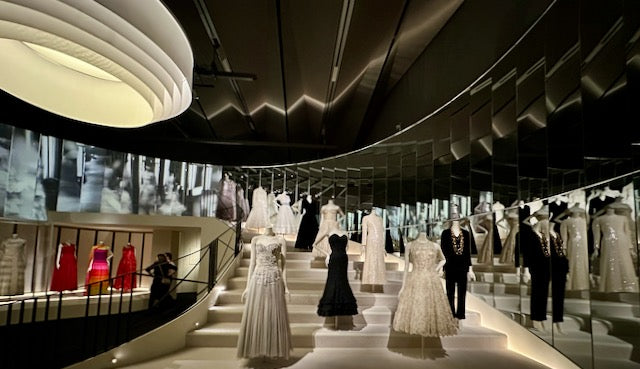Modernist architecture: steel-frame construction, a glass curtain wall, and an asymmetrical pinwheel plan
Established by architect Walter Gropius in 1919 and celebrating its Centenary this year, the Staatliches Bauhaus design school, or Bauhaus as it has come to be known, symbolised the spirit of 1920s Germany. Germany's defeat in World War I and the abolition of censorship under the new, liberal Weimar Republic, allowed new and radical experimentation in all the arts.

Walter Gropius - founder of the Bauhaus Design School
Bauhaus was strongly influenced by modernism, which had its roots in the 19th Century. It echoed the views of English designer William Morris who had argued 'art should meet the needs of society and there should be no distinction between form and function'. The Bauhaus style was centred on the harmony of function and design, which stripped away decoration and exposed structure.

Bauhaus Furniture sold by UK retailer Heal's, late 1930s
Gropius envisioned the Bauhaus school remedying the post-WWI housing shortage, using art, technology and mass production to create simplified architectural forms, that were functional, affordable and beautiful.
The Bauhaus movement went on the create furniture, homeware and textiles such as the 'Wassily' Chair, patterned rugs by Gunta Stolzl and glass and chrome lamps by Wilhelm Wagenfeld, all of which are still in production today. The influence of Bauhaus can be seen across all modern art, architecture and furniture design from Heal's to Ikea.

Wassily Chair - designed by Marcel Brauer 1925-1926
In 1933, the Nazi's forced the Bauhaus to close, accusing the school of being a 'bastion of Jewishness and communism'. Many of the Bauhaus Masters left the country to continue their work.
Following the Depression of the late 1920s and early 1930s, Bauhaus industrial, mass-produced furniture designs were championed as an economical and efficient option for the modern home, such as the cantilever Wassily and Cesca chairs, designed by Marcel Brauer and Ludwig Mies van de Rohe.

Cantilever chair by Ludwig Mies van de Rohe
Water Gropius and Marcel Breuer went on to teach at Harvard Graduate School of Design, which created some of the most pre-eminent architects in the world. The Bauhaus masters designed many significant buildings and had a strong influence on social housing in Britain from the 1930s to the early 1960s.

Recently restored, Isokon (Lawn Road) Flats in Hampstead, London, designed by Wells Coates in 1934
The Isokon building in Lawn Road, Hampstead was the first block of modernist flats, designed by Wells Coates for Jack and Molly Pritchard (who owned the Isokon design company) as an experiment to create communal urban living. Jack Pritchard kept a list of all the former tenants up until 1969, which included artists and intellectuals like the Freud family, George Orwell, Piet Mondrian, Barbara Hepworth, Ben Nicholson and Henry Moore.
The Isokon Gallery is a permanent exhibition in the original garages of the Isokon Lawn Road Flats, telling the remarkable story of the building -the pioneering modern apartment block - and can be visited Saturday's and Sundays 10am - 4pm from march through to October.
Isokon Gallery, Lawn Road, Hampstead, NW3 2XD



